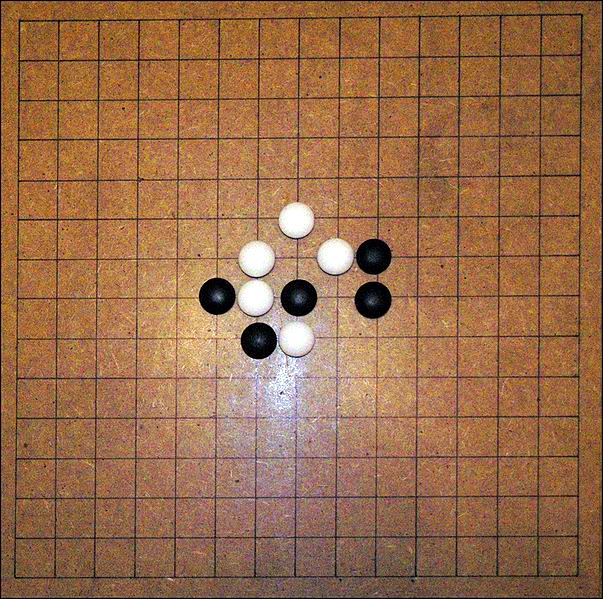Players 2 Setup time Minimal | Age range 5+ Random chance None | |
 | ||
Genre(s) Board game
Abstract strategy game Playing time | ||
Renju (Japanese: 連珠) is the professional variant of Gomoku. It was named Renju by Japanese journalist Ruikou Kuroiwa (黒岩涙香) on December 6, 1899 in a Japanese newspaper Yorozu chouhou (萬朝報). The game is played with black and white stones on a 15×15 gridded Go board.
Contents
- Opening rules
- Disallowed moves
- Winning
- World championships
- Team World championships
- Renju World Championships via Correspondence
- Members of the Renju International Federation
- References
Renju eliminates the "Perfect Win" situation in Gomoku by adding special conditions for the first player (Black).
Opening rules
Unlike Gomoku, Renju has a unique sequence of opening moves called an "opening rule". There are several certified opening rules. The list of requirements for new opening rules as approved by the RIF General Assembly in 2003 was:
I. Traditions
II. Simplicity and attraction
III. Creativity
An example of such opening rule (namely "RIF opening rule") follows.
- The first player places 2 black stones and 1 white stone on the board thus forming opening pattern.
- The second player now chooses whether to play black or white.
- White then places one more stone on the board.
- Black places 2 stones on the board.
- White removes one of the two black stones from the previous move.
- White places a white stone.
After this sequence is complete, Black and White continue to take turns to place their stones.
The Extra General Assembly of Renju International Federation in 2008 created three new sets of rules for openings that are to replace the above old sequence of moves: Soosõrv, Taraguchi, and Yamaguchi. Also a rejection system for their use was approved. The General Assembly of Renju International Federation in 2009 certified Sakata opening rule as proposed by Russia. The General Assembly of Renju International Federation in 2011 certified modified opening rules such as Taraguchi-N and Soosõrv-N.
Disallowed moves
There are certain moves that Black is not allowed to make:
Winning
Black can win the game only by placing five black stones in a row (vertically, horizontally or diagonally).
White can win by either:
World championships
World Championships in Renju have occurred every second year, since 1989. Since 2009 the opening rule being played is Yamaguchi.
Previous World Championships have taken place in the following places:
Team World championships
Team World Championships in Renju have occurred every second year, since 1996. Since 2010 the opening rule being played is Yamaguchi. The results are following.
Renju World Championships via Correspondence
World Championships in Renju via Correspondence were held in 1982 to 1993 (by paper letters, later by e-mails) and now are played every year since 1996 with an exception in 2009, 2010. Since 2014 the opening rule being played is Soosõrv-7. The results follow.
Members of the Renju International Federation
The Renju International Federation was founded by 3 founder members in August 8, 1988 in Stockholm, Sweden. Up to 2016, there have been 20 members in the Renju International Federation, among which 15 members are active. The list of members follows.
